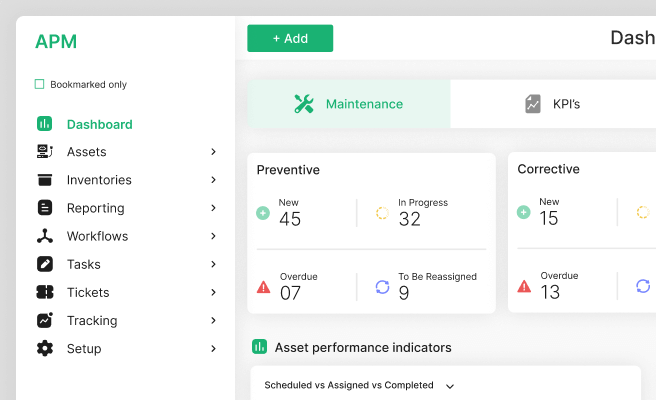Design for Sustainability
<p>Design for sustainability is a crucial approach in the digital product design realm, focusing on creating products that not only meet user needs but also minimize environmental impact. This concept integrates sustainable practices throughout the design process, ensuring that resources are used efficiently, and waste is reduced. As climate change becomes an ever-pressing issue, adopting sustainable design practices is more important than ever for companies in all sectors, including climate tech.</p>
<p>Historically, design focused primarily on aesthetics and functionality, often neglecting the environmental repercussions. However, the growing awareness about environmental sustainability has led to a paradigm shift. Designers now consider the full lifecycle of products, from material selection to production processes and end-of-life disposal. This holistic approach ensures that products are not only user-friendly but also environmentally responsible.</p>
<h2 id="importance-of-sustainable-design">Importance of Sustainable Design</h2>
<p>Sustainable design is not just an ethical choice but also a strategic one. Companies that adopt sustainable design practices can build stronger brand loyalty and differentiate themselves in a crowded marketplace. Moreover, they can reduce costs in the long run by optimizing resource use and minimizing waste.</p>
<p>For instance, <a href="https://www.ideo.com/post/designing-a-sustainable-future" style="color: #2896FF; text-decoration: underline;">IDEO</a>, a renowned design firm, has been at the forefront of integrating sustainability into their projects. They have worked on various climate tech initiatives, such as designing energy-efficient products and systems that reduce carbon footprints.</p>
<h3 id="key-components-of-sustainable-design">Key Components of Sustainable Design</h3>
<p>Several key components define sustainable design:</p>
<ul>
<li><b>Material Selection:</b> Choosing materials that are renewable, recyclable, or have a lower environmental impact.</li>
<li><b>Energy Efficiency:</b> Designing products that consume less energy during their lifecycle.</li>
<li><b>Lifecycle Thinking:</b> Considering the entire lifespan of the product, from production to disposal, to minimize environmental impact.</li>
<li><b>Waste Reduction:</b> Implementing practices that reduce waste generated during production and usage.</li>
<li><b>User Education:</b> Educating users about the sustainable features of the product and how to use it responsibly.</li>
</ul>
<h3 id="benefits-of-sustainable-design">Benefits of Sustainable Design</h3>
<p>Sustainable design offers numerous benefits, both for businesses and the environment:</p>
<ul>
<li><b>Cost Savings:</b> By optimizing resource use and reducing waste, companies can lower production costs and increase profitability.</li>
<li><b>Brand Differentiation:</b> Companies that prioritize sustainability can stand out in a competitive market and attract environmentally conscious consumers.</li>
<li><b>Regulatory Compliance:</b> As governments impose stricter environmental regulations, sustainable design ensures compliance and avoids potential fines.</li>
<li><b>Long-term Viability:</b> Sustainable practices contribute to the long-term viability of businesses by promoting resource conservation and reducing environmental impact.</li>
</ul>
<h3 id="challenges-in-sustainable-design">Challenges in Sustainable Design</h3>
<p>Despite its benefits, sustainable design also presents challenges:</p>
<ul>
<li><b>Higher Initial Costs:</b> Sustainable materials and technologies can be more expensive initially, though they often lead to cost savings in the long run.</li>
<li><b>Complexity:</b> Integrating sustainable practices into the design process can be complex and require specialized knowledge.</li>
<li><b>Consumer Awareness:</b> Educating consumers about the importance of sustainability and encouraging them to adopt sustainable products can be challenging.</li>
</ul>
<h3 id="real-world-examples">Real-World Examples</h3>
<p>Several companies have successfully implemented sustainable design practices:</p>
<ul>
<li><a href="https://www.apple.com/environment/" style="color: #2896FF; text-decoration: underline;">Apple</a> has committed to using 100% recycled aluminum for their products, significantly reducing their carbon footprint.</li>
<li><a href="https://www.patagonia.com/sustainability/" style="color: #2896FF; text-decoration: underline;">Patagonia</a> is known for its sustainable practices, including using recycled materials and promoting fair labor practices.</li>
<li><a href="https://www.ellenmacarthurfoundation.org/circular-economy/concept" style="color: #2896FF; text-decoration: underline;">Ellen MacArthur Foundation</a> works towards building a circular economy by promoting sustainable design and practices.</li>
</ul>
<h2 id="implementing-sustainable-design">Implementing Sustainable Design</h2>
<p>To implement sustainable design, companies can follow these steps:</p>
<ol>
<li><b>Conduct a Sustainability Audit:</b> Assess the current design practices and identify areas for improvement.</li>
<li><b>Set Clear Goals:</b> Define specific, measurable sustainability goals that align with the company's vision and values.</li>
<li><b>Choose Sustainable Materials:</b> Select materials that are renewable, recyclable, or have a lower environmental impact.</li>
<li><b>Optimize Production Processes:</b> Implement energy-efficient and waste-reducing production processes.</li>
<li><b>Educate Stakeholders:</b> Educate employees, partners, and consumers about the importance of sustainability and how to contribute to it.</li>
<li><b>Measure and Report Progress:</b> Regularly measure progress towards sustainability goals and report the results transparently.</li>
</ol>
<h2 id="conclusion">Conclusion</h2>
<p>Design for sustainability is not just a trend but a necessity in today's world. By integrating sustainable practices into the design process, companies can create products that are not only functional and aesthetically pleasing but also environmentally responsible. This approach not only benefits the planet but also enhances brand reputation, reduces costs, and ensures long-term viability.</p>
<p>Learn more about improving your sustainable design strategies by exploring resources from the <a href="https://www.sustainabilityconsortium.org/" style="color: #2896FF; text-decoration: underline;">Sustainability Consortium</a> and the <a href="https://www.unep.org/resources/report/2020-global-status-report-buildings-and-construction" style="color: #2896FF; text-decoration: underline;">UN Environment Programme</a>.</p> <p>We’re using the power of design to increase the adoption of climate technologies and innovation. View our work in climate to know more on how we can support your vision. <a href="https://www.whatifdesign.co/climate" style="color:#2896FF; text-decoration:underline;">View our climate projects</a>.</p> <p>Increase user engagement that converts your demos into sales. Optimise your UX strategies with our audits.
<p>Fill out the <a href="https://tally.so/r/n97pxQ" style="color:#2896FF; text-decoration:underline;">UX Audit form</a> to get started. Ready to discuss your needs? <a href="https://cal.com/akhilak/what-if-design?duration=25" style="color:#2896FF; text-decoration:underline;">Book a consultation call</a> with us today.</p></p>

Let's scale your impact with great design.
Free consultation, no sales pitch
Thank you! Your submission has been received!
Oops! Something went wrong while submitting the form.
Let’s talk
Nothing great is built alone.
Let’s connect about your vision, our work and how we can collaborate.
Get in touch

